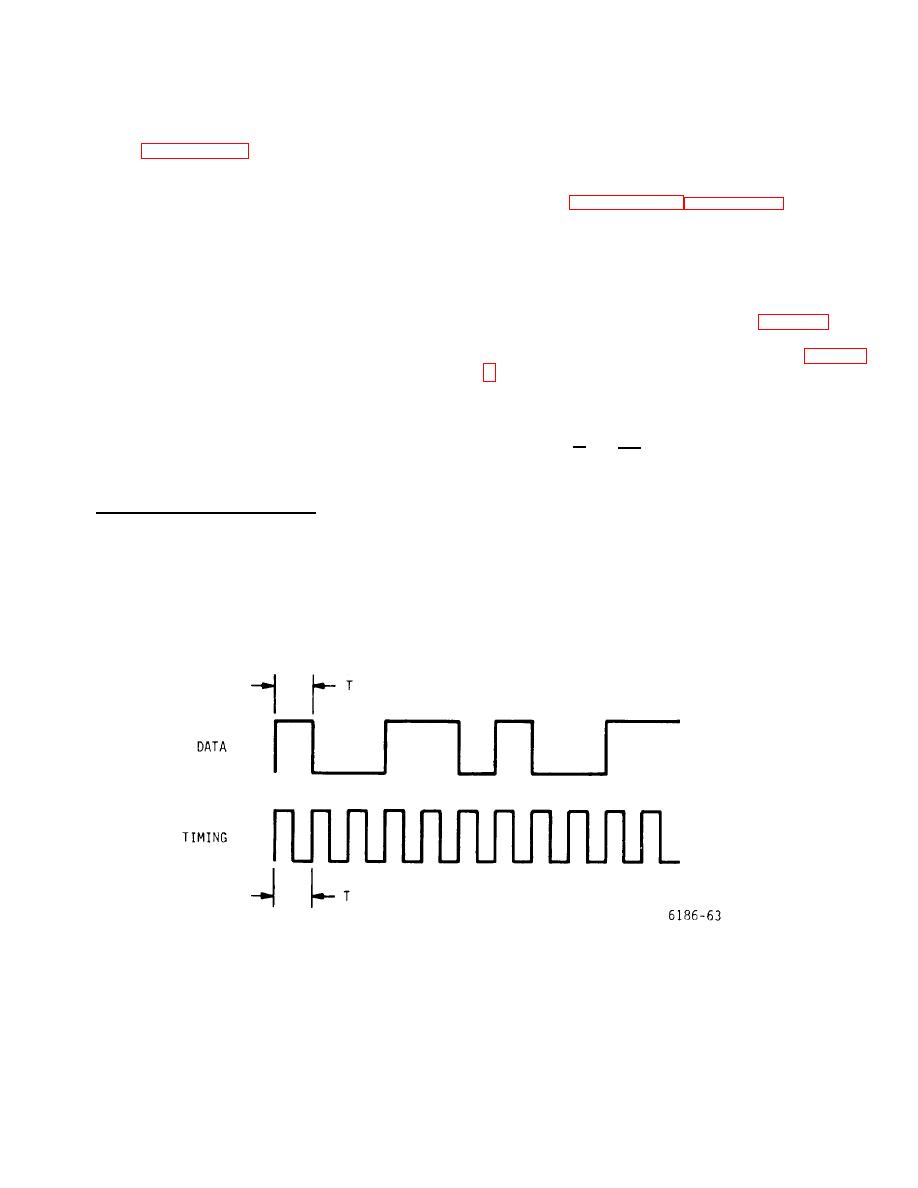 |
|||
|
|
|||
|
|
|||
| ||||||||||
|
|
 T.O. 31W2-2GSC24-2
TM 11-5805-688-14-1
NAVELEX 0967-LP-545-3010
demultiplexers are receiving inputs from a single
without associated timing; and voice data. The rates at
multiplexer (paragraph 3-9), port assignments within
which data inputs may occur depend upon the input form
each demultiplexer must match those of the transmitting
and the mode in which they are processed by the
multiplexer.
multiplexer set. Specific form and rate limitations are
discussed in paragraphs 3-19 through 3-24.
3-16. In summary, a port is an interval of time during
which a bit of data is inserted into the multiplexer's serial
3-19. DIGITAL DATA WITH ASSOCIATED TIMING.
output stream. For a given configuration, one or more
3-20. One of the channel input/output data forms
ports may be assigned to a particular channel; the total
accepted and processed by the multiplexer set is digital
for the channel is termed K. The product of K and the
data with associated timing. This data form is commonly
rate at which porting occurs (Ro) must equal or exceed
referred to as Type I, and is illustrated in figure 3-3. Note
the channel input rate (Ro). The total quantity of ports
that one complete cycle of the input/output timing signal
assigned to channels in a given multiplexer configuration
occurs for each bit time (T) of the data signal in figure 3-
is termed N, and when the overhead port is considered,
the total number of ports in use is N + 1. The value for N
channel data at any rate between 50 bps and 3.0 Mbps,
+ 1 varies between 16 and 32. Multiplexer output rate
provided the rate satisfies the expression:
(Ro) is equal to Ro (N + 1). Regardless of system
R
0.96 > K(1 - c)
application, port-to-channel assignments in a receiving
KR
demultiplexer must exactly match those of the
p
transmitting multiplexer.
3-17. CHANNEL RATES AND FORMS.
where
Rc = channel data rate
3-18.The multiplexer set will accept and properly process
charnel inputs of varying forms and rates. Input forms
include the following: digital data with associated timing;
Rp = port rate
digital data
K = number of ports assigned to
the channel
Figure 3-3. Typical Type I Channel Input/Output Data and Timing Waveforms
3-5
|
|
Privacy Statement - Press Release - Copyright Information. - Contact Us |